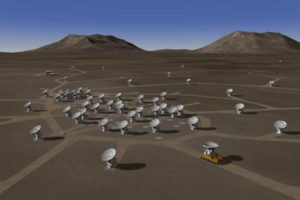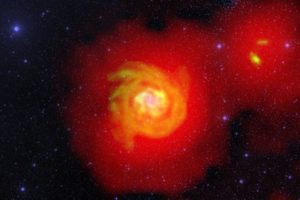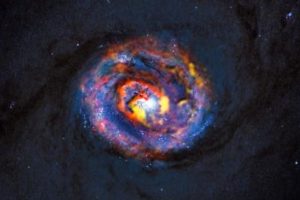national radio astronomy observatory
Super-sharp radio ‘eye’ remeasuring the universe
Using the super-sharp radio “vision” of astronomy’s most precise telescope, scientists have extended a directly-measured “yardstick” three times farther into the cosmos than ever before, an achievement with important implications for numerous areas …
Surprise: Dwarf galaxy harbors supermassive black hole
The surprising discovery of a supermassive black hole in a small nearby galaxy has given astronomers a tantalizing look at how black holes and galaxies may have grown in the early history of the Universe. Finding a black hole a million times more ma…
Why are sunspots a source of radio emissions? NJIT researcher explains more
Why sunspots are a strong source of radio emissions and what information those emissions carry will be the focus of an invited talk by NJIT Research Professor Jeongwoo Lee tomorrow at the International Astronomical Union Symposium on the Physic…
Giant Cosmic Lens Reveals Secrets of Distant Galaxy
Using the National Science Foundation’s Very Large Array (VLA) radio telescope and helped by a gigantic cosmic lens conveniently provided by nature, an international team of astronomers has discovered that a young galaxy had a central disk of gas in which hundreds of new stars were being born every year — at a time when the Universe was only a fraction of its current age.
Pulsar Bursts Coming From Beachball-Sized Structures
In a major breakthrough for understanding what one of them calls “the most exotic environment in the Universe,” a team of astronomers has discovered that powerful radio bursts in pulsars are generated by structures as small as a beach ball. “These are by far the smallest objects ever detected outside our solar system,” said Tim Hankins, leader of the research team, which studied the pulsar at the center of the Crab Nebula, more than 6,000 light-years from Earth. “The small size of these regions is inconsistent with all but one proposed theory for how the radio emission is generated,” he added.
Surprising Image Revises Understanding of Dwarf Galaxies
An intensive study of a neighboring dwarf galaxy has surprised astronomers by showing that most of its molecular gas — the raw material for new stars — is scattered among clumps in the galaxy’s outskirts, not near its center as they expected. “This tells us that the galaxies we call dwarf irregulars are even more irregular than we thought,” said Fabian Walter, of the National Radio Astronomy Observatory (NRAO) in Socorro, NM. “Our new work also shows that these galaxies probably are useful ‘laboratories’ for studying how stars were formed when the Universe was young,” Walter added.
Giant Radio Jet Coming From Wrong Kind of Galaxy
Giant jets of subatomic particles moving at nearly the speed of light have been found coming from thousands of galaxies across the Universe, but always from elliptical galaxies or galaxies in the process of merging — until now. Using the combined power of the Hubble Space Telescope, the Very Large Array (VLA) and the 8-meter Gemini-South Telescope, astronomers have discovered a huge jet coming from a spiral galaxy similar to our own Milky Way.




